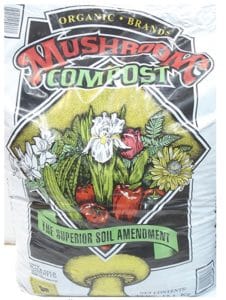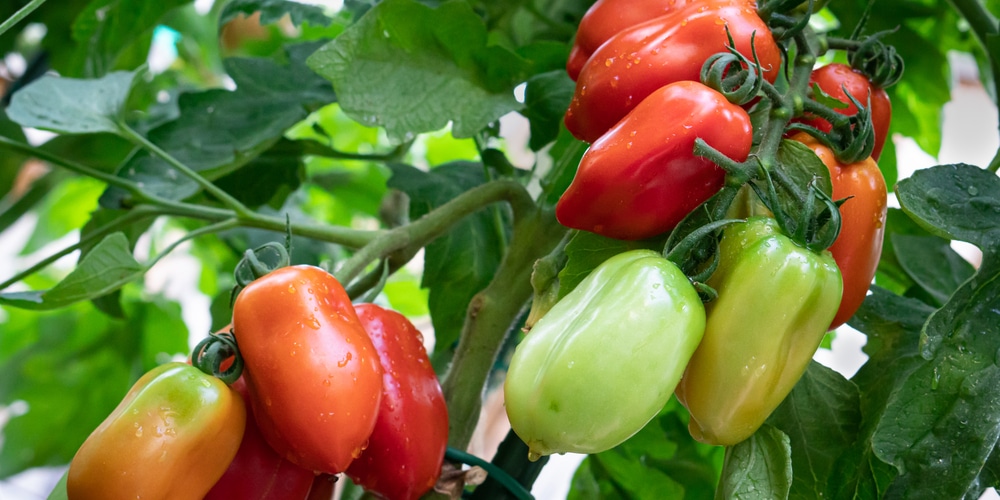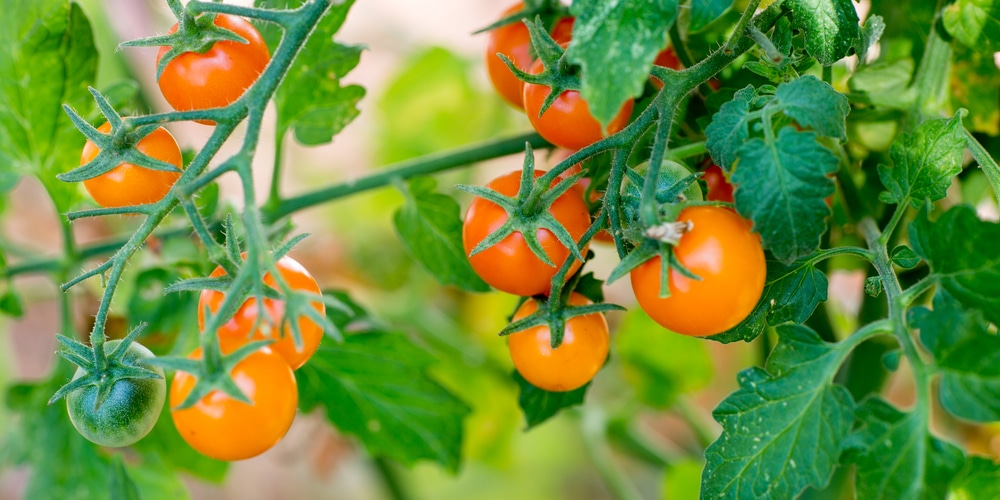If you are into gardening, you have probably already heard about compost. Applying it around your plants can be beneficial. After all, it contributes to raising the soil’s nutrient content, improves drainage and aeration, and even suppresses some weeds and diseases. But have you ever heard of mushroom compost ? And is it something you should add to your crops? For instance, can you apply it to your tomatoes?
You can find answers to these questions (and more) in this essential guide we put together for you.
What Is Mushroom Compost?
If you know about compost, you may already know what mushroom compost is. But if you don’t, don’t worry! We are here to help! The term refers to a soil amendment that will enrich and improve your garden soil (when applied correctly).
In particular, mushroom compost consists of a mixture of several materials. Such products are heated up and composted until they gain a soil-like texture.
The name doesn’t refer to the presence of mushrooms in the mixtures. Instead, it comes from how mushroom facilities use this type of compost to grow crops as it is rich in nutrients and minerals. Indeed, it is an excellent product to foster spores’ development.
Usually, mushroom compost contains a mixture of hay, peat moss, chicken manure, lime, and ammonium nitrate. However, the exact ingredient list may vary depending on the producer.
The technique to make it is more or less the same regardless of the source and usually lasts between three to four weeks. Before using it as a growing medium, the producer let it sit for a couple of months to heat it.
The chemical process results in finished compost, perfect to use around plants. The result is an organic (and slow-release) fertilizer.
Can You Use Mushroom Compost on Tomatoes?
Despite its name, you can use mushroom compost on various plants. But can you use it even on tomatoes?
While tomatoes aren’t challenging plants to grow, you need to pay attention to them. And knowing about tricks that can make your life easier might be very helpful.
Luckily, mushroom compost is one of those tricks. Indeed, it contains nutrients and minerals that are essential for tomatoes’ growth. You can incorporate it into your plants in a solid form or as a “tea.”
Besides what we already mentioned, mushroom compost will help increase water retention (which is helpful if you grow your tomatoes in a hot and dry region).
Plus, it contributes to training the soil’s alkalinity, which may come in handy to gardeners that need to deal with acidic substrates. And because this type of compost is high in calcium, it will make your tomatoes healthier (and more beautiful).
So, to make the story short: yes, you can use mushroom compost on tomato plants. Of course, as with most things in life, even too much of a good thing can be harmful. So, before adding it to your tomatoes, you may want to learn how to use it! Jump to the following section to get our tips!
How To Use Mushroom Compost In Your Garden
So now that you know that mushroom compost might benefit your crops, you may be wondering how to apply it. We have good news for you: the practice is simple. However, to avoid issues, you ensure you do it properly.
For instance, we recommend using a rake to spread the mixture around your tomatoes. Also, don’t forget to avoid applying it too close to the plants’ base. Doing so may cause root rot, which isn’t an ideal condition.
Apply a layer that should be between two and three inches thick. Don’t forget to keep the soil moist before the application to increase absorption.
Plus, if you have a hoe, use it to work the compost into the substrate: it will increase the effectiveness of the compost. Mixing the compost with garden soil is essential to prevent harming seedlings and seeds.
Even though we haven’t mentioned it before, you must spend some time removing weed seeds and pests before applying compost. While this might sound like double work, don’t be lazy! It will save you from plenty of headaches in the future and ensure your plants grow without issues from the start.
Related Article: How to Get Rid of Mushrooms in a Yard?


